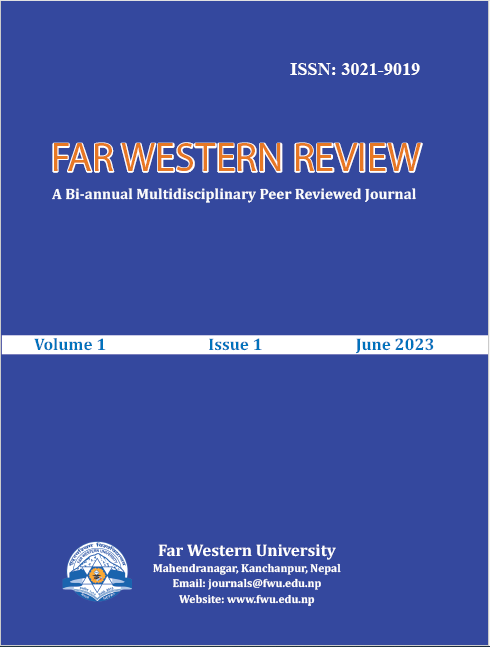Chimamanda Ngozi Adichie’s Americanah: Of Hybrid Subjectivity, its Locations and Subverting Potential
DOI:
https://doi.org/10.3126/fwr.v1i1.58268Keywords:
Mimicry, bybridity, third space, ambivalence, resistance, locationAbstract
This paper looks into Chimamanda Ngozi Adichie’s Americanah as a postcolonial text. Using the Bhabhaian constructs of “mimicry,” “hybridity” and “the third space,” this paper argues that Adichie’s narrative portrays how the coming together of cultures induces “mimicry” of the cultural norms of the seemingly dominant culture. Owing to this “mimicry” the mimicking characters develop a “hybrid” identity characterized by “ambivalence.” This paper also argues that the location/ site of mimicry and consequent development of hybrid identity are not conditional upon physical migration, or moving beyond the borders of one’s homeland. The tendency to look up to the supposedly dominant culture can prevail within the confines of natives’ own society as well, which is perhaps an indication of the post-colonial society still reeling under the continued colonial influence. Whatever maybe the location of “hybrid” characters, “ambivalence” invariably crops up in their identity. Although ambivalence indicates being indecisive about one’s identity, and about how one looks at the identity of the other, it might also mean emancipation from the burden of restricting and discriminating categories as exemplified by Adichie’s narrative. In the ambivalent state the hybrid subjects can nurture hopes to rise above the assumed purity of cultures. The native- colonial or white-black nexus in this sense may be understood to have steered away from confrontation, and found a way towards reconciliation.
Downloads
Downloads
Published
How to Cite
Issue
Section
License
Copyright (c) 2023 Anuradha Rokaya

This work is licensed under a Creative Commons Attribution-NonCommercial 4.0 International License.
CC BY-NC: This license allows reusers to distribute, remix, adapt, and build upon the material in any medium or format for noncommercial purposes only, and only so long as attribution is given to the creator.




